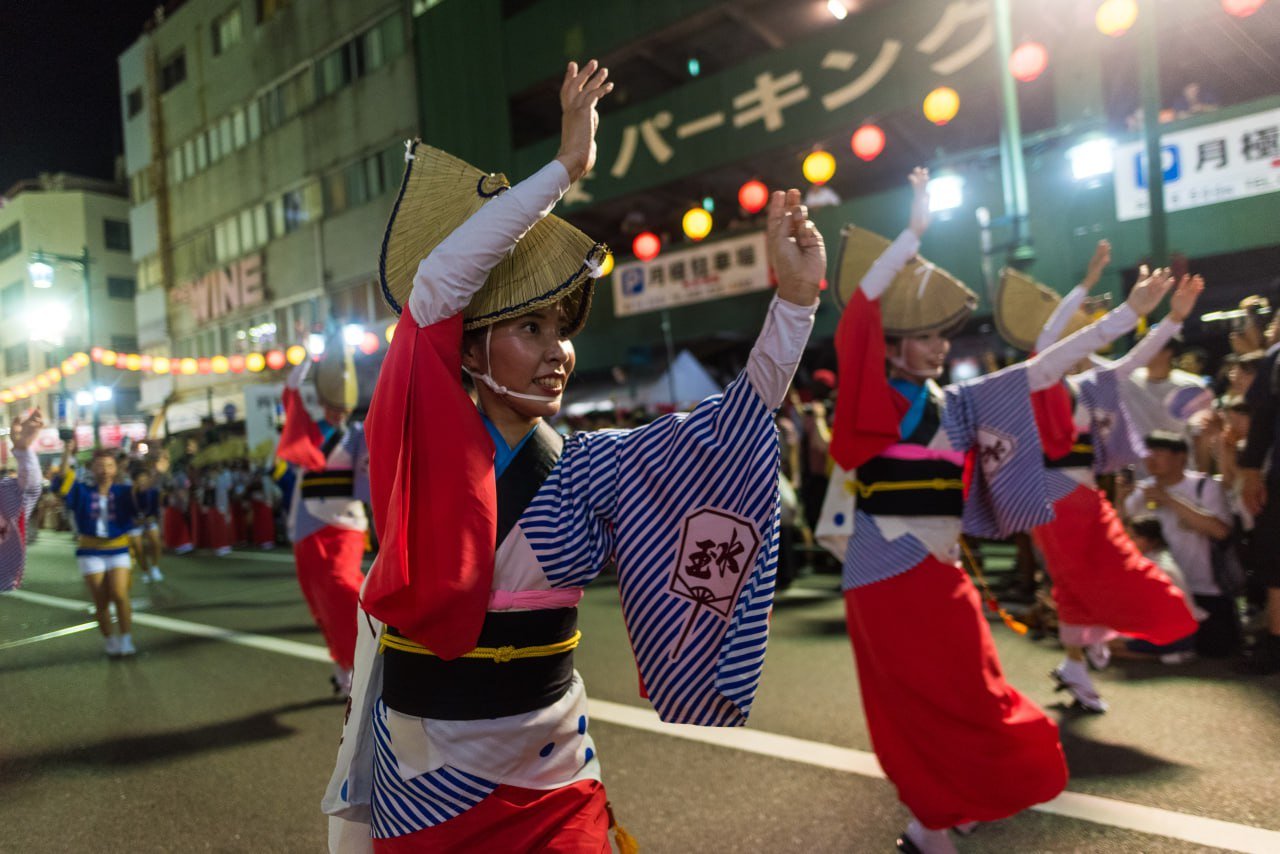After the marvelous experience of glimpsing Mount Fuji through the clouds, my journey led me toward a different kind of joy, Joy in Motion —the pulsating heart of the Awa Odori festival in Tokushima. This modest city in Tokushima Prefecture has long sustained itself through agriculture, its produce traditionally flowing through local markets rather than reaching national prominence. Yet beyond Japan’s borders, signs of recognition emerge: a discrete restaurant tucked away in Hong Kong’s Sham Shui Po district now celebrates Tokushima’s culinary treasures, hinting at the prefecture’s growing international appeal. And the pictures of Awa Odori have become universally synonymous with Japan’s Matsuri, the traditional festivals.
When Tradition Becomes Legend
The Awa Odori didn’t merely put Tokushima on the map—it transformed the city into a pilgrimage destination for those seeking authentic Japanese cultural expression. This mesmerizing dance festival traces its origins to 1586, when a local daimyo threw an extravagant celebration for the opening of Tokushima Castle. As the sake flowed freely, villagers found themselves swept into spontaneous movement, swaying and dancing for days in what would become one of Japan’s most cherished traditions.
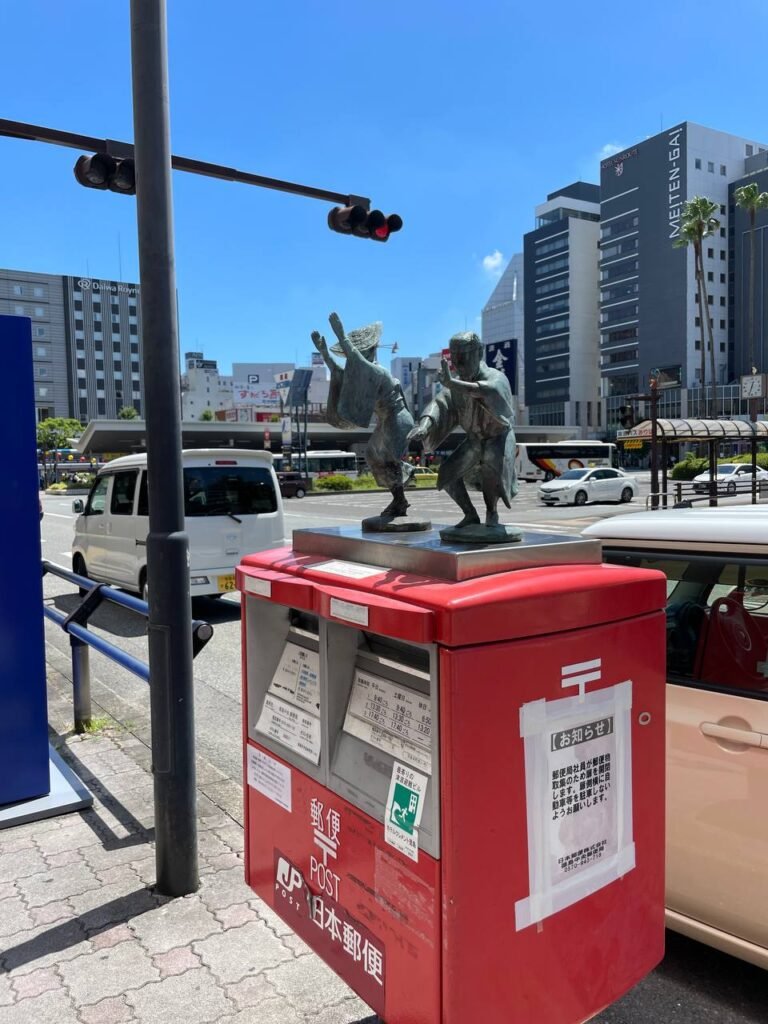
The festival’s significance permeates every corner of Tokushima life. Even at the train station, visitors are greeted by charming statues of Awa Odori dancers adorning a humble mailbox—a delightful reminder that this art form is woven into the city’s very identity.
The Annual Transformation
For three magical days, Tokushima undergoes a remarkable metamorphosis. The city’s population swells threefold as 1.3 million visitors converge on this cultural mecca, transforming quiet streets into joyful rivers of humanity. Finding accommodation during this period—which coincides with the Obon holidays—becomes nearly impossible, yet the festival remains surprisingly intimate. Even my JAL flight attendant confessed her amazement at my visit, admitting she’d never experienced the festival herself despite her Japanese heritage.
Joy without chaos
During those festival days, euphoria saturates every street corner. While premium viewing seats command thousands of dollars, the real magic unfolds in public spaces where crowds gather in spontaneous celebration. The contrast with Western festivals is striking—here, joy manifests through order rather than disorder. There are no scenes of public intoxication or unruly behavior, only the dignified exuberance that characterizes Japanese celebration.
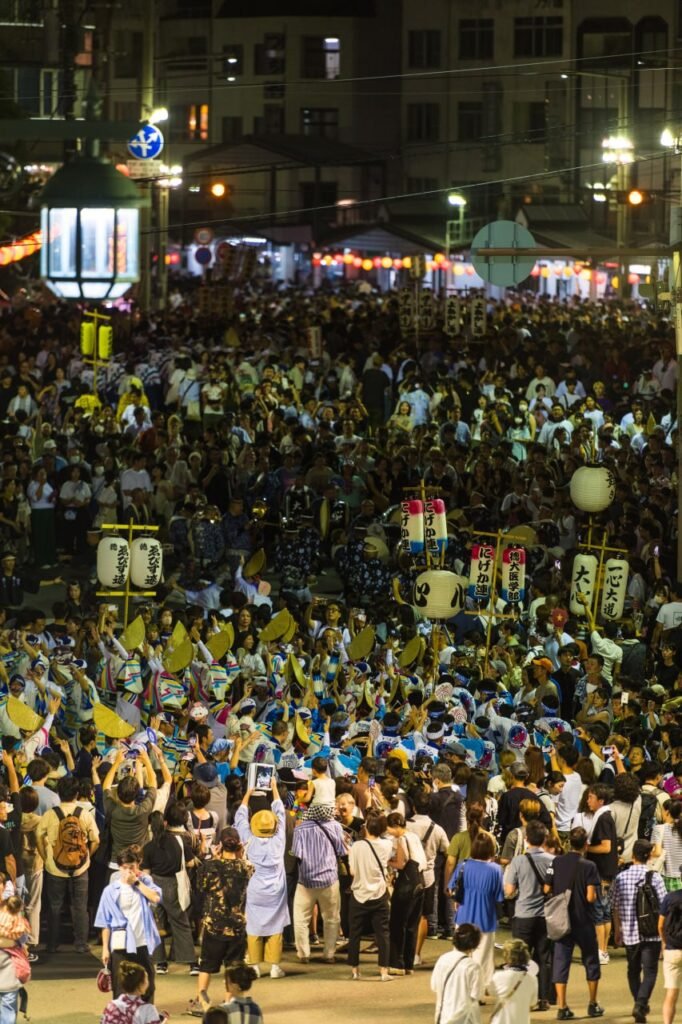
“Festivals” in Europe generally have a very negative connotation, with drunkards, unkempt people and public disorder. Nothing such in Japan, where the public is generally very well behaved with an orderly joy even during a festival.
For many performers, this annual showcase represents their moment to shine. The dedication is palpable as dancers deliver their finest performances, particularly the women who demonstrate extraordinary skill dancing en pointe on traditional geta sandals. Their grace and technique are nothing short of mesmerizing.
For many performers, it is the occasion of being seen and giving their best once per year, with the group to which they belong. The energy displayed and the technique for the ladies dancing on the tip of their geta is astounding.
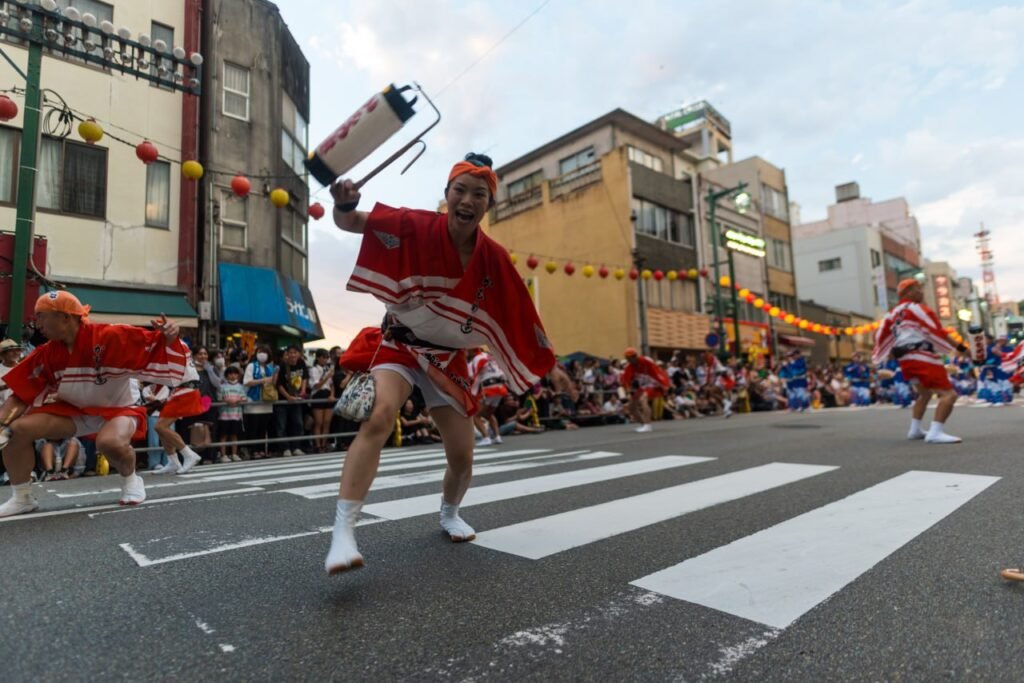
Perhaps the most heartwarming spectacle comes from the youngest participants. Children as small as toddlers lead their troupes with unwavering concentration, their tiny forms executing the same complex movements as their adult counterparts with endearing precision. These miniature performers embody the festival’s continuity, ensuring its traditions pass seamlessly between generations.
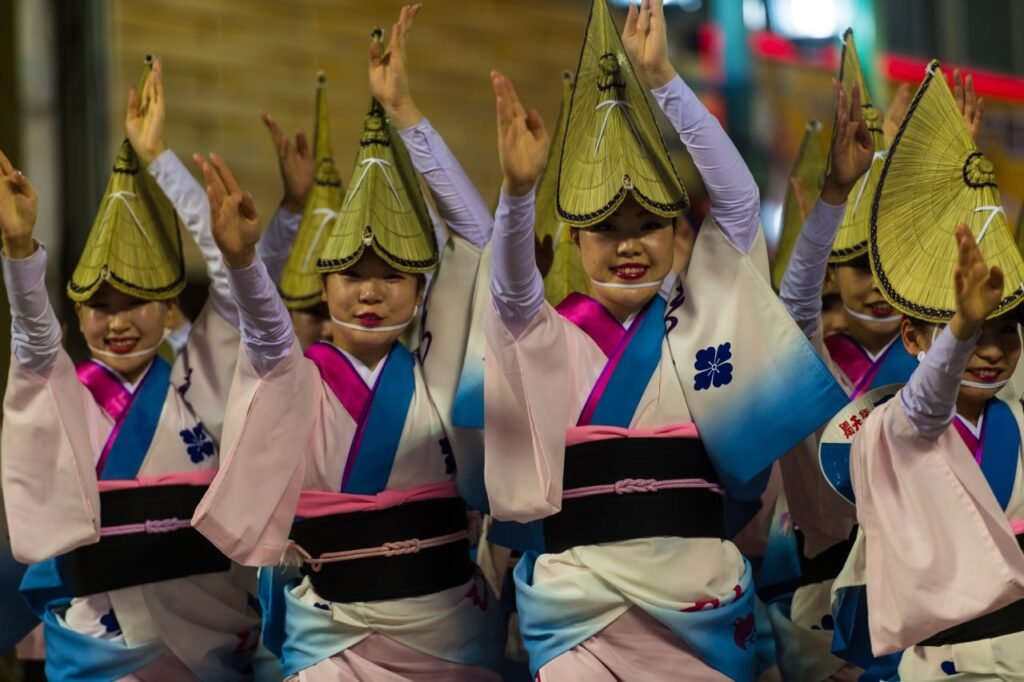
A Photographer’s Paradise
For those behind the lens, Awa Odori presents an unparalleled opportunity. The dancers welcome photography with genuine pride, understanding that each captured moment helps preserve and share their cultural heritage. The synchronized nature of the performances creates stunning visual possibilities—dozens of dancers moving as one entity, their collective energy frozen in perfect harmony.
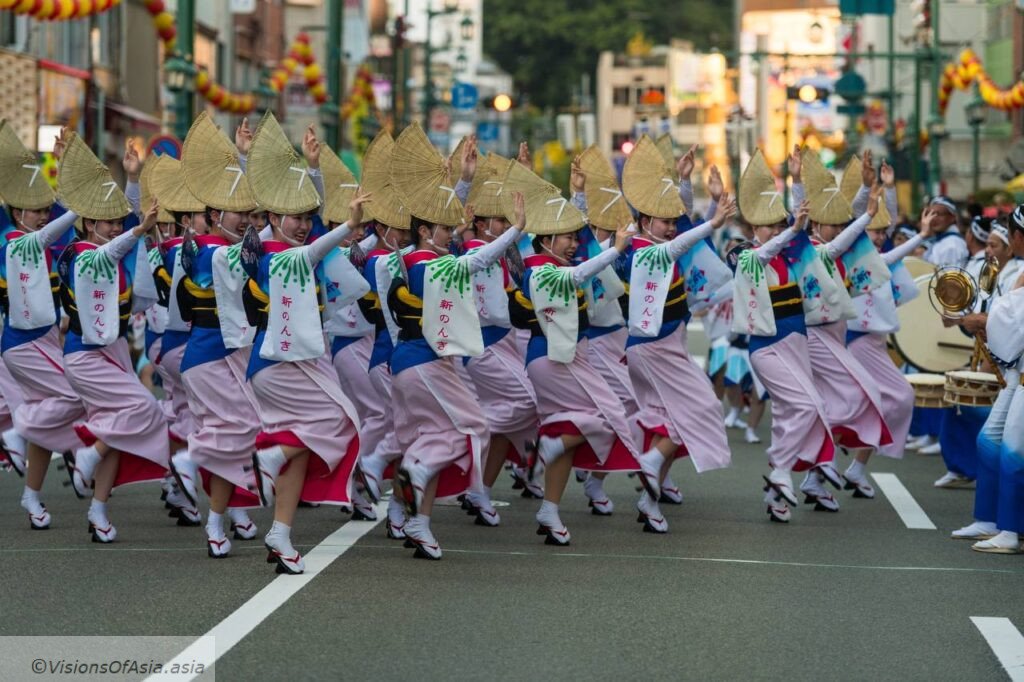
Throughout the eight-hour celebration, the festival offers endless perspectives. Close-up shots reveal the intense concentration etched on dancers’ faces, while elevated positions provide sweeping views of the choreographed spectacle below. Each vantage point tells a different story, from individual passion to collective artistry.
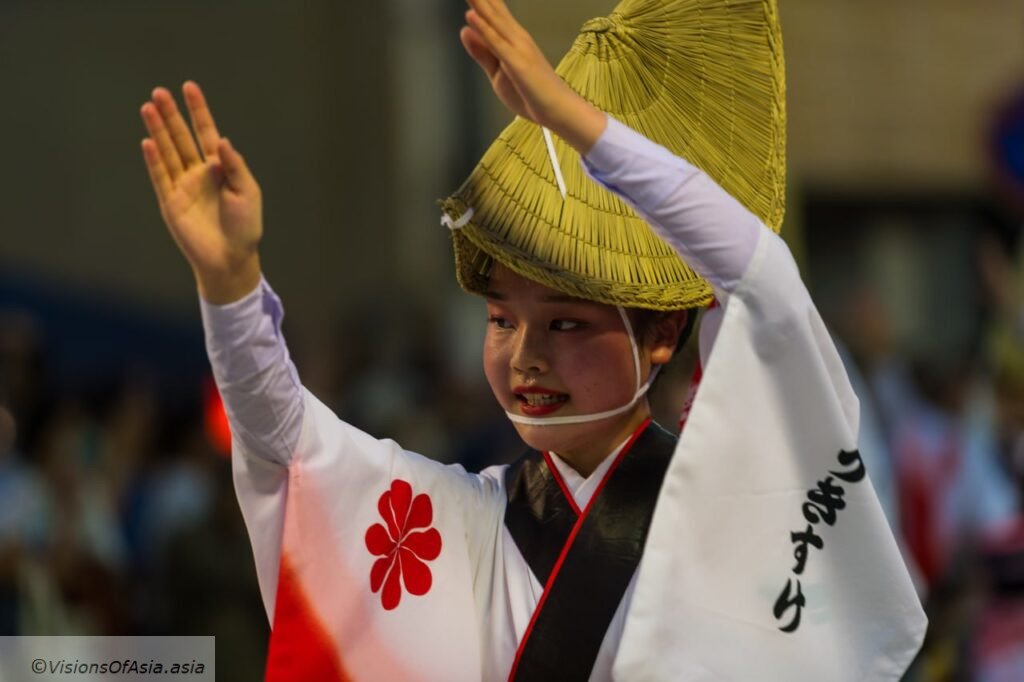
From this focus on the individual, let us take some move backwards to see the move at a higher level, as this gives really an idea of the beauty of the movement and the synchronism required to offer the best performance for each dancing group.
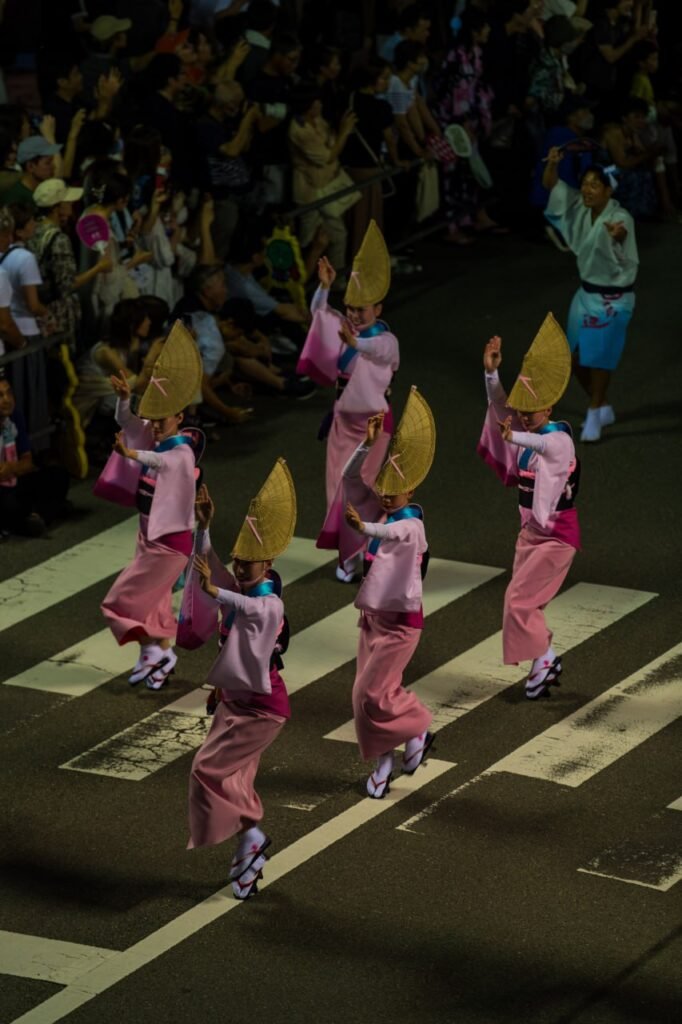
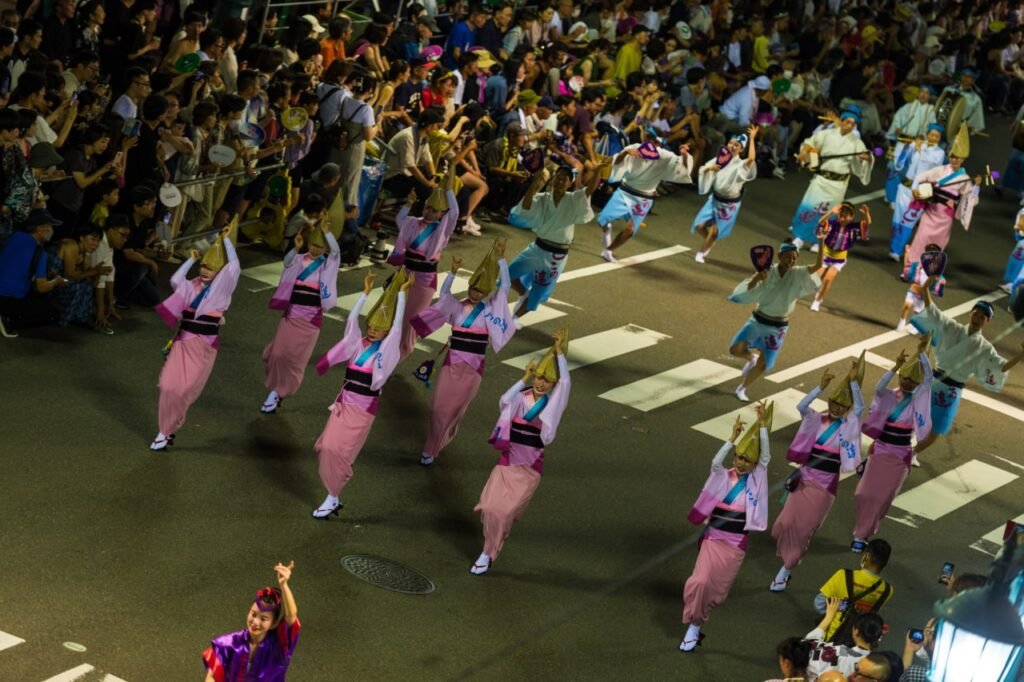
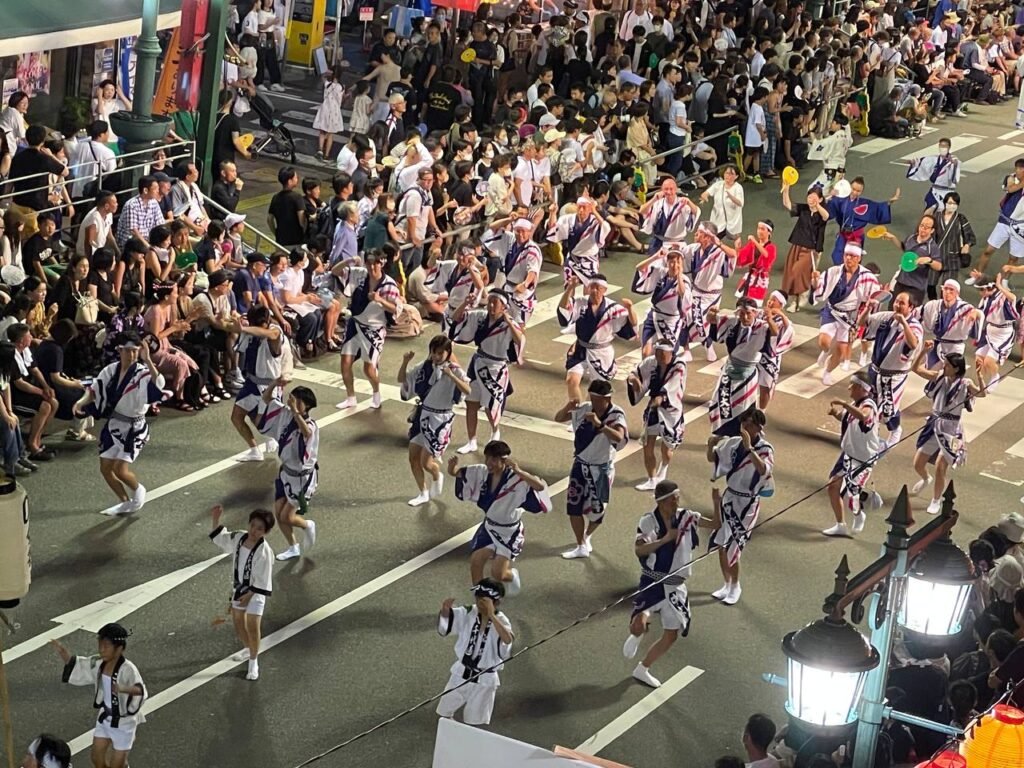
Of course, such a dance continues with individual performances.
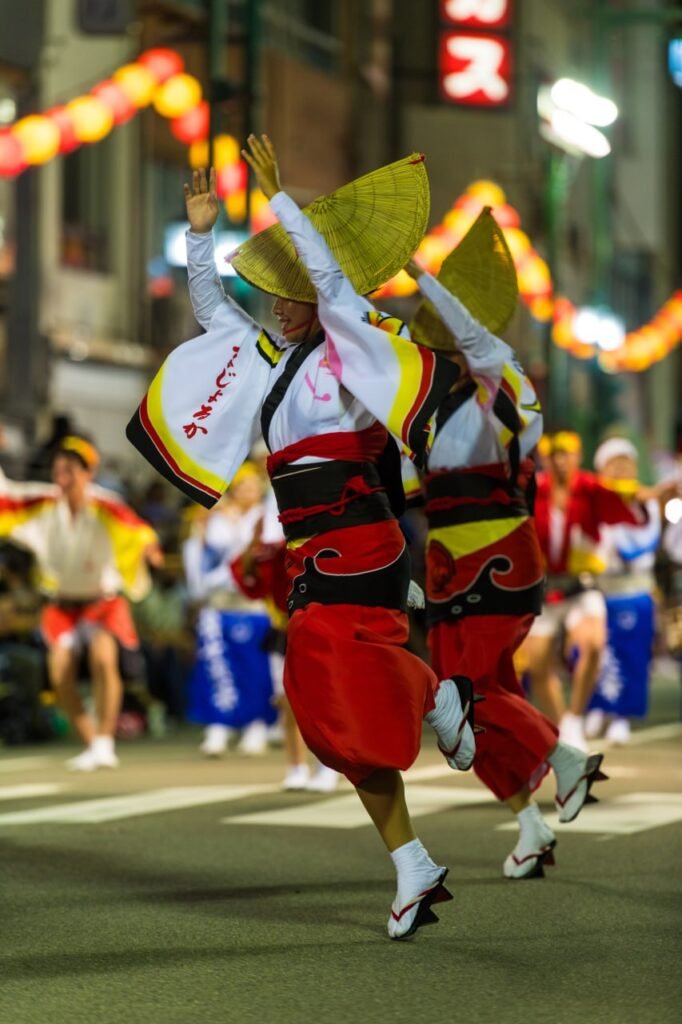
One can imagine the skill need to hop on geta sandals and the joy needed to carry out this performance while smiling constantly.
As can be seen in this video, the energy and joy are really contagious, with dancers giving their best and the public responding in kind.
The Joyful Pulse of Tradition
The beauty of Awa Odori lies not just in its visual splendor but in its ability to connect past and present, individual and community, performer and observer. In those rhythmic moments, as ancient traditions pulse through modern streets, Tokushima reveals itself as more than just a destination—it becomes a living testament to the enduring power of cultural celebration.
Planning Your Awa Odori Adventure
Attending Awa Odori in August demands strategic planning, as hotels book out months in advance. While Tokushima sits conveniently close to Kobe and Osaka—making day trips theoretically possible—this approach would rob you of the festival’s nocturnal magic and the city’s transformed atmosphere. Instead, consider your accommodation options carefully.
Hotel prices in Tokushima average around $80 for 3-star properties, significantly more affordable than Tokyo or Kyoto’s premium rates. Mid-range hotels in major cities like Tokyo typically cost 10,000 to 25,000 yen ($90-230) per night, while business hotels and simple ryokan in Japan generally range from 12,000-30,000 yen per double room. During festival season, however, expect premium pricing and limited availability.
For transportation, you have several routes to consider. The overland journey from Osaka or Kobe takes approximately 2.5 hours by train, offering scenic views of the Japanese countryside. Alternatively, direct flights from Tokyo Haneda to Tokushima Airport take just 1 hour 25 minutes with Japan Airlines or ANA. Flight prices can vary significantly, with some deals starting around $96 for one-way tickets, though booking closer to the festival dates will likely see prices increase substantially to $300-450 per person in economy class.
Many visitors stay in nearby Naruto (40 minutes by train), Takamatsu (1 hour by train), or even make the 2.5-hour journey from Osaka when Tokushima’s hotels are fully booked. Consider booking alternative accommodations while continuing to search for Tokushima options right up until your departure, as last-minute cancellations sometimes free up rooms in the city center.
The investment in time and planning pays dividends when you find yourself swept up in the rhythmic pulse of this extraordinary celebration, surrounded by a million fellow festival-goers all united in their appreciation for one of Japan’s most captivating cultural traditions.

